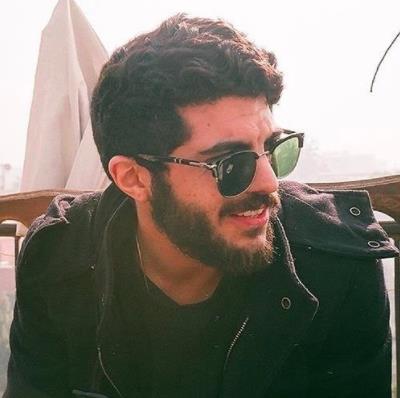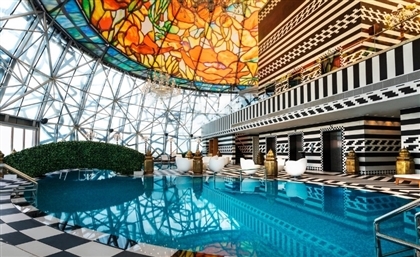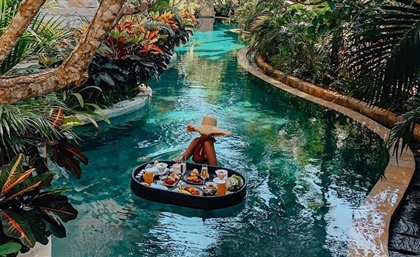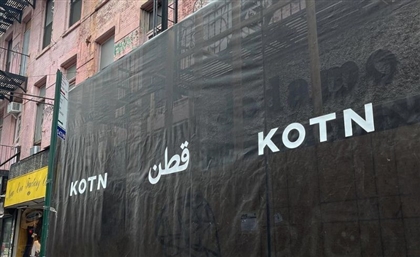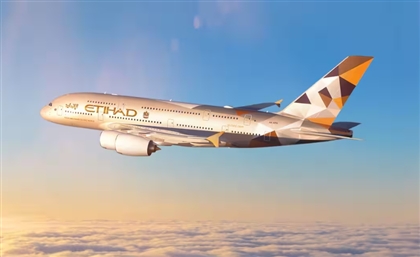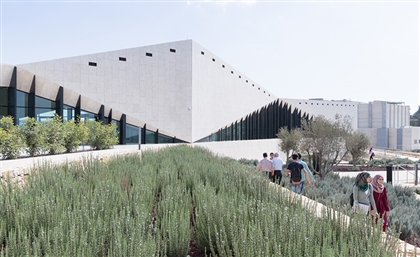Koza Cave & The Persevering Magic of Turkish Gem Cappadocia
A stunning, borderline surreal destination, Timmy Mowafi goes down the rabbit hole of a truly unique city, one whose Insta-fame is 100% #NoFilter.
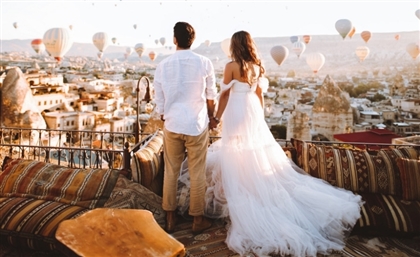
There are destinations that stay with you for a long time after you leave - scenes that become engraved in your memory. These places are affirmations that you have filled your eyes with enough wonder and beauty to be satisfied when the lights go out. Almost immediately after arriving in Cappadocia, I knew it would be one of those places. It’s truly one of the most magical cities in the world, a living, breathing spectacle between God-made naturality and man-made ingenuity that oftentimes feels too surreal to be true, and although I only had the chance to experience it for three days, the sites I’ve seen will no doubt be singed into my stories for a lifetime. It is also exceptionally good for the ‘gram.
First impressions of this little slice of heaven in central Turkey give off faint American Midwest town vibes mixed with a quaint Swiss skiing village. It also has the added advantage of a mind-blowing, literally earth-shatteringly stunning, Lord of the Rings-esque backdrop; a lush and complex formation of valleys and mountains formed of soft layers of lava and ash 60 million years ago, that looks precious from every angle. The caves carved across its ancient landscape tell the story of a civilization’s long and at times volatile past. Much like Egypt, it has the bragging rights of being mentioned in biblical texts. Human settlement in the Cappadocian region dates back to the Paleolithic era before the Hittites began carving out more than a hundred underground cities between the 12th century BC and 12th century AD, used for wine-making, food storage, and animal shelters. These subterranean structures then became a refuge for the first Christians who were shunned by the pagan Roman Empire. Over the last two decades, many of these caves have been transformed into hotel rooms whilst maintaining their original structure, such as the hotel I inhabited for my stay: Koza Cave.
Cappadocia’s pious narrative at the centre of both Catholic and Orthodox history once made it a popular destination for faith-based tourism. However now, things are different - it’s the church of Instagram that drives the city’s travel industry.

When we arrive at Koza Cave Hotel, there’s a huge flurry of activity. Sam Dural, one of the owners, is in the midst of producing a stunt that has been three years in the making. A crew of prominent influencers and content creators with millions of followers will attempt to film a free skydive from one of the hot air balloons in a style akin to a scene from a Michael Bay film. “I'm always after doing different things,” Sam tells me one night when I prod him about the action-movie escapades and what they can do to market the area. “You know, the balloons have been flying here for 20 years and it's happening every morning. I saw someone do a similar jump seven years ago, that was back before social media had spread in the same way and I was determined that it had to happen here.”
“We want the world to know that this place exists because it's just absolutely amazing,” Tamer, Sam’s brother and co-owner, adds. “It means a lot to us to be able to promote it. I guess that's where it all started.”
The brothers are extremely passionate about a city they’re now proud to call home. In 2008, their father Dervish Dural, one of six generations born in the area moved back after spending decades in Holland and took over two local Göreme houses that were in ruin. Over six years, with the help of his returning sons and wife Aysel, he painstakingly transformed the structures into a rustic, family run, eco-inspired, 10-suite cave retreat, set at the highest point of any hotel in Cappadocia, one that has become a big favourite with Insta-tourists across the world.
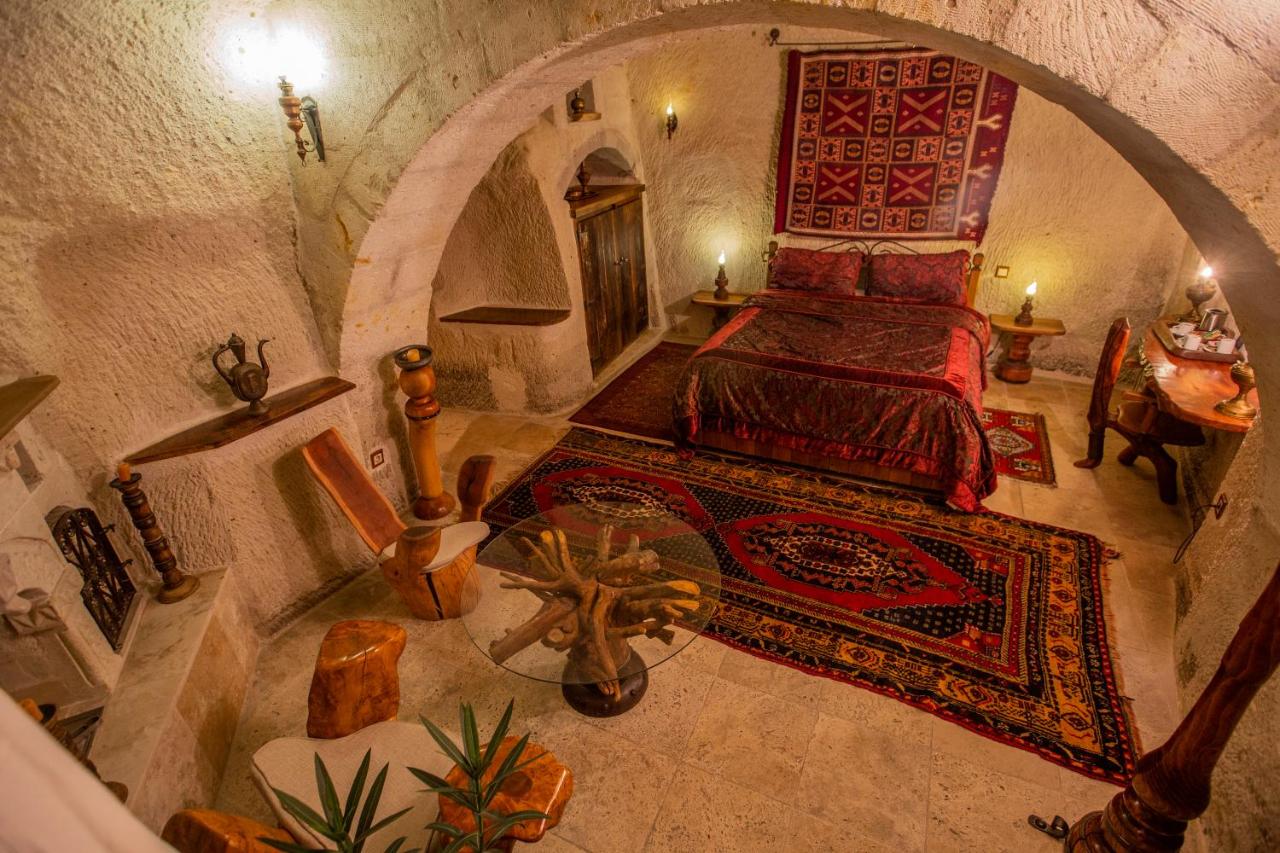 One of Koza Cave Hotel’s 10 cave suites
One of Koza Cave Hotel’s 10 cave suites
Attached to one of the landscape’s iconic ‘fairy chimneys’ and centered around a small courtyard with dreamy 360 degree views from terraces on different levels, the rooms are decorated in a traditional style with an incredible attention to detail, all playing into their eco-sensitive ethos - the unique accessories, lamps and furniture are mostly hand-made by Dervish himself up-cycling salvaged materials, whilst greywater is used throughout the hotel.
Tamer and his girlfriend Lisa are looking after the rooftop bar during my stay which leads to some superb late night chat; Sam is often on excursions, connecting guests right, left and centre, while their mother can be seen tending to the surrounding flowers and gardens or overseeing a delicious breakfast of local delights. It honestly feels like home rather than a hotel, but with all the additional luxuries. The Koza in the name means Cocoon. Out of 400 hotels that have popped up in a small area, Koza Cave was the 85th, and I can’t have imagined having anywhere else as my base. Staying in the King Suite, the highest room in Cappadocia, with a mezzanine bed and a window overlooking the dance of the balloons was an added bonus.
Several years ago, Sam convinced his parents to begin accepting ‘collabs’ - hosting select influential guests in return for exposure. Interest in the property and reservations soared. “Other hotels here are still thinking about advertising in a traditional way, Google ads etc,” Sam explains.
However, they understand all too well the catch 22 involved. The influx of tourists is of course beneficial to the economy. Beyond the obvious, tons of markets have also bloomed that would seem obscure to those not so social media savvy - a huge concentration of dress and classic car rental companies, video and photo tours have emerged to facilitate content creators’ bucket list visions. It’s a double edged sword that has simultaneously provided notoriety to the region yet may slowly erode their community’s local customs.
-7df1fdc2-fcd6-4b0d-b332-54ce0b1ec543.JPG)
When the Durals founded the hotel it was mainly backpackers arriving, staying for one or two weeks to indulge in the museums and cultural idiosyncrasies of Cappadocia. Then five years ago, as the story goes, an influencer from New Zealand dragged a bunch of pillows from her hotel room onto a terrace to take a picture - and the rest is history. ‘Flashpackers’ is the term the brothers jokingly give to the new breed of tourists who often come with the objective of taking the perfect photos and leaving soon after without absorbing or appreciating the true nature of the place.
“Before this whole Instagram thing, there were houses in between the hotels with lots of people living in them,” Sam begins to reminisce, painting a romantic picture of the past. “For example, in August, you would see locals make the grapes and tahini and the local ladies would dry apricots on the roof. They would make the Turkish pancakes in the morning, the triangle ones, they would do that in the streets. They would be there weaving and drinking tea... and now that’s fading away.”
This seems like a common problem surrounding many originally historic sites around the globe. Cappadocia however, to fresh eyes has nowhere near lost its beauty nor is it even close to ‘tourist trap’ saturation.
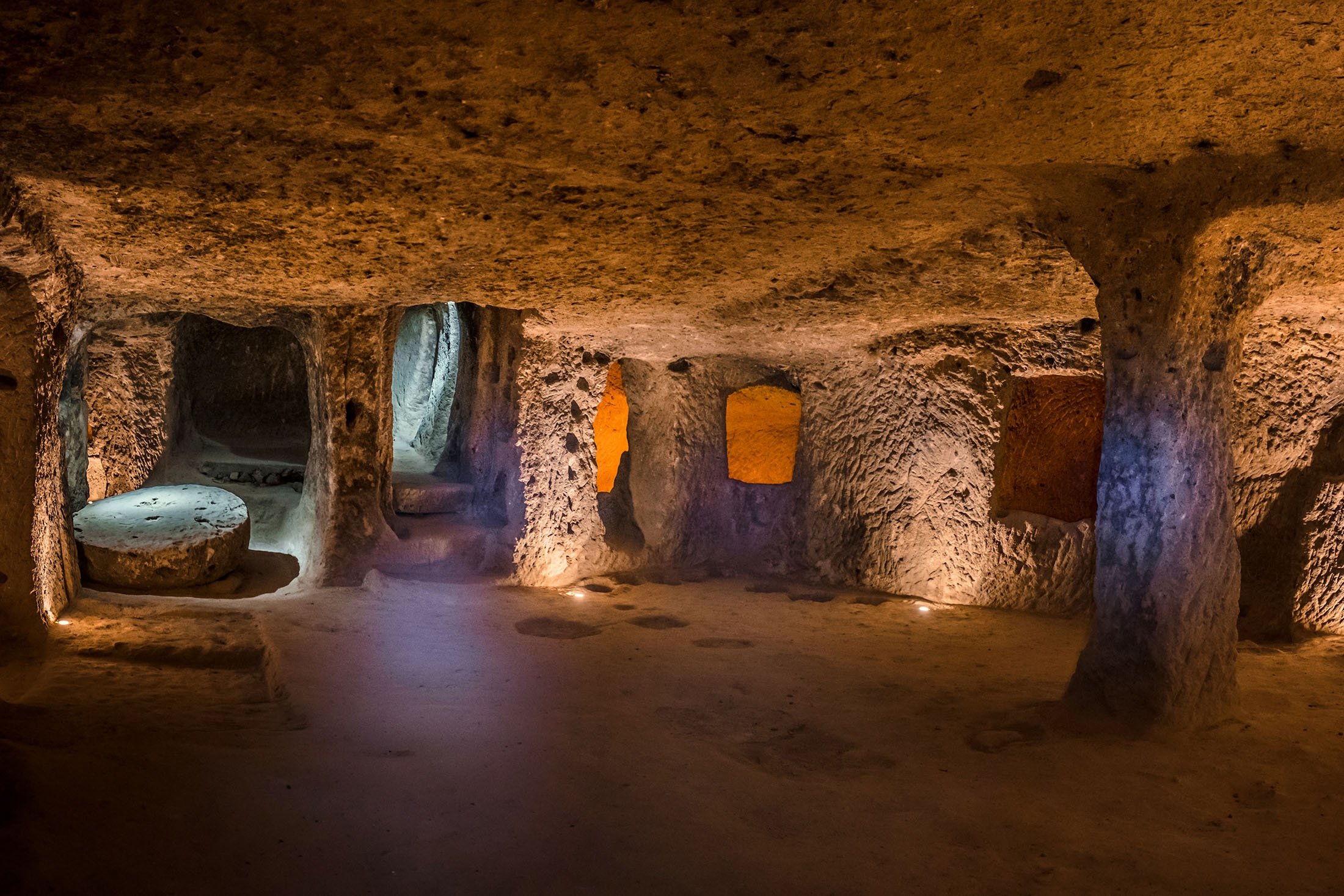 Kaymaakli Underground City
Kaymaakli Underground City
There’s nothing wrong with bringing home a little visual souvenir, especially in a place as photogenic as this but as long as you balance it out by being present, and genuinely experiencing as much as possible. Take a hike up Pigeon Valley, a stone's throw away from Koza Cave Hotel, and refuse to turn back even as the sun begins to set because every elevated corner smacks your gob and drops your jaw just a bit more. Buy a postcard from a man who sells his own hand-drawn designs on them. Visit the underground cities despite the lack of good lighting for iPhone’s portrait mode. Learn a thing or two from the local tour guide whose father is doing tours at the same time and tip him well. Wander aimlessly through Cappadocia’s narrow cobbled streets and indigenous stone facades and take a bite from a fruit growing in a street-side tree. Take a bite from just about everywhere in a city which reigns supreme at cooking up a microcosm of Turkey’s best dishes from their famous Manti (A Turkish ravioli with yogurt sauce) or Pide (Turkish flatbed) and when you’ve sampled enough organic wine at your local cave bar and made friends with enough of the absurdly adorable street dogs living in perfect harmony with the human population of the city, soak it all up before bed with a classic Turkish doner kebab.
Whether you’re going to Cappadocia for the sacred and the scenic, the gowns and the gram, or the kebabs and the kavurma, just go - because this place transcends time through its terrain and is more lovely than you can ever imagine beyond the Instagram likes.
GUIDE TO CAPPADOCIA
WHERE TO STAY
Koza Cave. Get up at 5AM to watch the balloons take to the sky from the highest terrace in the city. Have a craft beer at the rooftop bar in the evening and chat with Tamer about the genesis of the Ottoman Empire. Stay in a literal cave room where ancient civilizations once slept.
HOW TO GET THERE
Fly into Istanbul and then take a one hour flight to Nevshehir followed by a 30-45m taxi ride to Cappadocia. Taxi will cost around 250-309 TL.
-You’ll need a negative PCR test within 72 hours to get into Turkey.
-Fill out this health form: Register.health.gov.tr
-Register for a visa online at evisa.gov.tr
WHAT TO DO
Take a magical hot air balloon tour over the Cappadocian valleys. It will cost you anywhere between €70-€120 depending on which travel agent you ask, the season, and how many people you have with you in the basket, but it doesn't seem like a big difference between them experience-wise. They usually end with a cute (sometimes non-alcoholic) champagne celebration and a certificate. If you want to do the stereotypical balloon backdrop photo, go for it, but don’t skip the ride itself - it’s truly a once-in-a-lifetime experience. If you’re not so photo-savvy you can also hit up a wide range of local photographers such as @capadocia_photographer who not only know their way around a great shot but around the city itself and all the best photo spots.
Go into the wild. Almost all the tours promoted are just as beautiful and unique as the other, whether that’s Pigeon Valley, Rose Valley, Red Valley, or Monk’s Valley, so visit one or visit them all and you’ll be just as awe-struck by them as viewing them from any of Cappadocia’s high-rise terraces. The only real choice you have to make is to do it by foot, quad-bike, or horse.
Take a local workshop and get a taste of the real Cappadocia whether that’s weaving, pottery in the nearby Avanos, or traditional cooking classes in Cappadocia.
Visit the ancient underground city of Kaymaakli (60 TL entrance), 40m below ground with a vast network of fungus-like cave formations that tell the story of thousands of years of civilizations. Make sure to hire a tour guide at the entrance to give you context and history, or you’ll get lost and claustrophobic just looking at a bunch of rocks underground.
Same goes for Derinkuyu (35 TL entrance) which is deeper at 85m below ground. Both underground cities are around 40 minutes from the center of Cappadocia town.
Visit a horse ranch (Cappadocia literally means The Land of Beautiful Horses), such as Dalton Brothers, and you will feel transported instantaneously to Clint Eastwood cowboy land as you ride through the sepia desert, dust and dung flying in the wind, fantastical rock formations in all directions. For an extra fee they can also give you an epic photo opportunity where they arrange the horses to safely stampede around you.

Visit Galerie Ikman, a famous Aladdin-like wonderland with a remarkable open air courtyard selling thousands of authentic multi-colored Hali or Klim handmade (but rather expensive) Turkish carpets.
Go on a little shopping spree (basically everywhere) specifically for incredible hand-painted China, ceramics, spices and local sweets.
WHERE TO EAT
Dibek was probably my favourite restaurant in the town with a typically stunning view (pretty much everywhere has a stunning view) on their terrace section and a traditional turkish floor seating area in their bottom floor. Order the ‘Little Little in the Middle’ - a gratifying mix of traditional cuisine mini-dishes to test a bit of everything on your palette.
Old Cappadocia is a breezy open-roof courtyard restaurant in the center of town nestled between shops that also serve traditional Turkish cuisine and make the most delicious cheese and kunafa dessert.
Seten situated right next to Koza Cave is a little more high-end, with some staggeringly picturesque nooks, and serves up delectable and elaborate main dishes. Go for the slow-cooked lamb shank in teriyaki and home-made plum sauce with mashed eggplant.
Main image by @Capadocia_photographer at Koza Cave Hotel
- Previous Article Dr.Sisilove or How (Not) To Diffuse A Bomb
- Next Article Cairo Marriott's Ice Cream Truck Is Giving Us Summer All Year Long
Trending This Week
-
Apr 23, 2024
-
Apr 18, 2024



